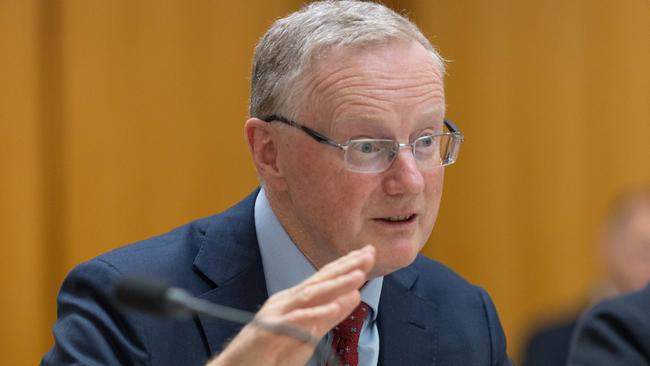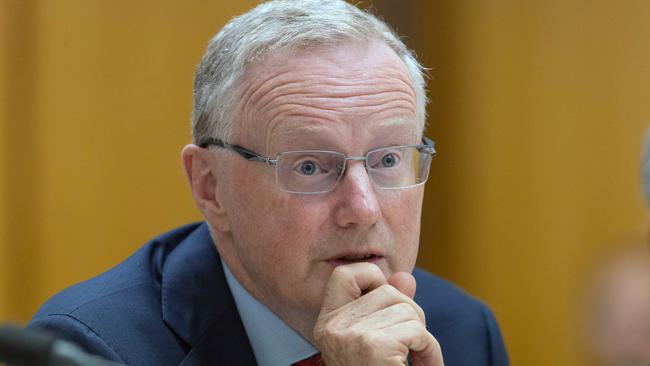Lowe warns 500,000 jobs would be price of high inflation
Reserve Bank governor Philip Lowe says a steep downturn and losing more than half a million jobs would be ‘the price’ of letting high inflation become entrenched in the economy.

Reserve Bank governor Philip Lowe says a steep downturn and losing more than half a million jobs would be “the price” of letting high inflation become entrenched in the economy.
Dr Lowe said he recognised “the finances of many households are under very real pressure from high inflation – including for rents – rising interest rates, and falling housing prices”.
“This is a challenging environment for many people. We recognise that the full effect of higher interest rates is yet to be felt, with some borrowers still benefiting from low-interest fixed-rate loans,” he said. “We are very conscious that the impact is being felt very unevenly across the community.”
But he also said “it would be dangerous, indeed, not to contain and reverse this period of high inflation”.
Dr Lowe said a second straight month of weak jobs numbers – unemployment in January unexpectedly climbed from 3.5 per cent to 3.7 per cent – had not changed the bank’s view about the need for further rate hikes.
Appearing in front of a parliamentary committee for the second time this week, Dr Lowe emphasised that while higher interest rates were painful for many households, the alternative of not doing enough to bring consumer price growth back towards target would be even more painful for Australia as a whole.

“If we don’t get on top of inflation and bring it down in a timely way the end result will be even higher interest rates and more unemployment,” he said.
Under pressure to justify nine straight interest rate increases since last May and the prospect of more pain ahead for borrowers, Dr Lowe pointed to the experiences of the 1970s and 80s when it took a four to five percentage-point increase in the jobless rate to bring inflation down after it became embedded.
“That’s what happened in the United States, in the UK, in Australia and in some European countries. That’s the cost,” Dr Lowe said. “History teaches us that once inflation becomes ingrained the end result is even higher interest rates and even greater unemployment to bring inflation back down.
“It’s very, very costly if inflation gets entrenched. And we really, really want to (avoid) that. We think we can do it (bring inflation back to target). And if we don’t, then we will pay a cost.”
The Australian’s analysis suggests an increase in the jobless measure to 8.7 per cent, rather than the RBA’s central case of 4.5 per cent, implied an extra 600,000 Australians becoming unemployed, based on current workforce levels.
Dr Lowe said he believed it was still possible to navigate the “narrow path” of slowing the economy by enough to return inflation from 7.8 per cent to 3 per cent over the coming two years, with unemployment climbing to 4.5 per cent, from 3.7 per cent now. While this “soft landing” of regaining control of inflation without losing all the employment gains made through the pandemic remained the bank’s “central case”, it was not assured, and the RBA had become more worried about the risk of “not doing enough”, particularly after the December quarter consumer price data suggested demand was running stronger than expected.

Dr Lowe said the change in the RBA’s communication following the February 7 meeting – a message of further rate rises in the months ahead – was about reinforcing this message.
Speaking at the same committee hearing, RBA assistant governor Brad Jones said about half of owner-occupiers with variable rate mortgages were a year ahead on their repayments and about a third were two years ahead.
But “at the other end of the distribution, we observe around 10 per cent of variable rate owner-occupiers have virtually no spare cash flow after they make their repayments and their living costs,” he said. “Having very low buffers (means) those households have a limited ability to cut back on consumption. So the picture is very uneven across households” and geography, he said.
Dr Lowe quoted RBA analysis showing 880,000 fixed-rate loan facilities will roll over this year – the number of affected households will be lower than that – with a total amount of about $350bn. “These borrowers will face very significant increases in loan repayments.”
Dr Lowe highlighted the seasonal adjustment issues in the labour data over the summer months, with many more people than usual off work and waiting to start new jobs.
He said the jobs market was “incredibly tight” late last year, and that there is evidence that “things have tailed off a bit”. “That heat’s come out (of the labour market), which is good, but other indicators we have suggest the labour market is still very tight.”








To join the conversation, please log in. Don't have an account? Register
Join the conversation, you are commenting as Logout